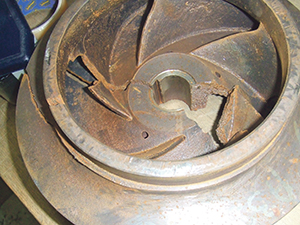by Dave Cannon, Technical Manager, Reflex Winkelmann GmbH
Many within our industry would think of the installation of degassers, in both atmospheric and vacuum formats, as being methods by which issues such as air locking were cleared. Other than that, they are seen as a long-term solution to corrosion issues.
 It was my experience, when employed by a major pump manufacturer, that service engineers would often be called to sites to be told, “Your pumps are down on duty”. Obviously, this caused delays in practical completion, as systems could not be signed off. After a while, we noticed a pattern emerging. Generally, the flow was down to 80-90% of duty and it was often on chilled water circuits. In each case, it would be found that the pumped medium was highly micro-bubbled, compromising the hydraulic performance. Had a vacuum degasser been installed, the system would have been clear of any air/gas and the pump’s performance would have followed the published performance curve. In each case, the project experienced unnecessary and often costly delays.
It was my experience, when employed by a major pump manufacturer, that service engineers would often be called to sites to be told, “Your pumps are down on duty”. Obviously, this caused delays in practical completion, as systems could not be signed off. After a while, we noticed a pattern emerging. Generally, the flow was down to 80-90% of duty and it was often on chilled water circuits. In each case, it would be found that the pumped medium was highly micro-bubbled, compromising the hydraulic performance. Had a vacuum degasser been installed, the system would have been clear of any air/gas and the pump’s performance would have followed the published performance curve. In each case, the project experienced unnecessary and often costly delays.
With the increased use of variable speed pumps in systems, a pump selection may have been made with an envisaged operating frequency of 40Hz, however the pumps needed to run at nearer 50Hz to achieve the required duty. It’s worth remembering that because the hydraulic properties of the pumped medium are compromised, the efficiency of devices across the system will be severely reduced. By simply restoring the hydraulic properties to the correct values, the energy savings across the entire system can be considerable.
 A mechanical seal by design must leak, but in a very controlled manner. When a pump is stationary, the rotating and fixed faces of the seal, are pushed together, with a combination of spring and hydraulic pressure. When the pump is running, a film of water, only microns thick, holds the faces apart, however if the pumped medium is highly micro-bubbled, the hydraulic properties of the lubricating film is compromised, and the two seal faces will touch. This can be witnessed in quiet plant rooms, by a ‘chippering’ noise coming from the pumps. That is the noise of the seal faces, ‘kissing’ each other.
A mechanical seal by design must leak, but in a very controlled manner. When a pump is stationary, the rotating and fixed faces of the seal, are pushed together, with a combination of spring and hydraulic pressure. When the pump is running, a film of water, only microns thick, holds the faces apart, however if the pumped medium is highly micro-bubbled, the hydraulic properties of the lubricating film is compromised, and the two seal faces will touch. This can be witnessed in quiet plant rooms, by a ‘chippering’ noise coming from the pumps. That is the noise of the seal faces, ‘kissing’ each other.
As the seal faces touch, friction can elevate the temperature at the seal faces to over 200ºC at the point of contact, even on a chilled water circuit. It follows that the water content flashes off to steam. What it leaves behind are the solids in suspension. In some cases, this will be sodium nitrates and other materials from the water treatment, although we have seen an instance where the material was residue from glycol in a cooling system. Over a relatively short period time, the materials form an abrasive slurry, which can damage the seal faces, creating a leakage path. When an engineer changes the seal, based on his observation that the seal components are contaminated, he may conclude that the pumped medium is not clean.
It would seem fair to estimate that 90% of circulating pumps that have issues, relate to micro-bubbled systems. In all cases the introduction of a vacuum degasser offered a satisfactory solution. However, I would advocate caution when selecting the right unit to address these issues. Most of these units are produced outside of the UK, where the water treatment regimens are very different to the ones utilised here in the UK. To that end, solenoid valves are used for the regulation of flow. These devices are extremely susceptible to any solids in suspension and will often be seen discarded in plantrooms. It makes sense to try to select units that do not employ a combination of solenoid and pressure reducing valves. Units that use self-cleaning motorised valves, with automatic hydraulic optimisation, are a far more viable option.

